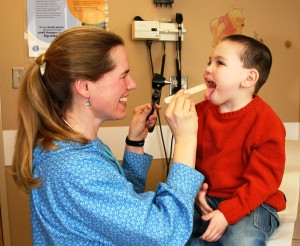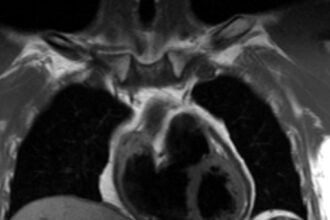

The recent article in Science showing increased use of emergency rooms after Medicaid expansion in Oregon, became a front page article in the New York Times. The New York Times stated, “ Those who gained coverage made 40 percent more visits to the emergency room than their uninsured counterparts during their first 18 months with insurance.” This is not surprising; the answer isn’t just coverage of all individuals, but developing a community based system of health care with primary care at the center – and this has been done in Alaska.
Prior to 1999, Alaska Natives were previously subjected to the type of health care that Republicans contest is an inefficient government bureaucracy, managed by the Indian Health Service. All Alaska Natives were covered, without cost to them, however patients were not happy, the doctors were not happy – patients often saw different providers each visit, and utilization of the ER was high. But by 1999, because of the Indian Self-Determination and Education Assistance Act of 1975, the Anchorage Alaska Native group had taken control of the healthcare system from the federal government and changed the administration of healthcare, and the relationship to customer-owners (the new recognition that patients were now in charge) and they made changes to how primary care worked. They call this the Nuka model of healthcare.
Because they have a closed population, SouthCentral Foundation is able to track what happens to that patient group, when they go to an ER, and their utilization. The hospital is a partner in the healthcare.
The Primary Care Center is an integral part of the Alaska Native Medical Center – but a more integral part is the development of relationships between the customer-owners and the providers. Because Southcentral Foundation is a partner with the adjacent Alaska Native Hospital, accurate statistics are able to be kept about utilization. These facilities have been the birthplace and home to our most dramatic achievements in health care under the Nuka Model system. The complete redesign of the system in accordance with Native values has yielded the following outcomes:
Same-day access to primary care
You are able to see a primary care physician that day. The ability to see someone that day has led to
40% decrease in costly Emergency Room and Urgent Care visits
But ER visits are one part of a system. By having primary care heavily involved in the relationship of patients it also decreases other costly utilization of the healthcare system such as:
Decrease in specialty care by about 50%
Going to a specialist is more costly than going to a primary care physician – and if they are not needed, and can be managed by primary care it decreases the burden and costs of specialty care.
What is even more remarkable is the idea of knowing what is needed in the next few months of the patient and doing everything you can at that one visit. For example, if you see in three months they need a breast examination, doing it at that visit. If they need vaccinations in a month, doing it at that visit. This is called “max packing” and this led to
Decrease in primary care visits by 20%
The other key is admission to hospitals, and hospital days once you are admitted. No matter how much preventive care, and maintenance care there will still be need for hospitalization. The use of the primary care system has led to
Decrease in admissions and days by 30%
These remarkable cost-saving achievements have all been accompanied by improved health outcomes, customer and staff satisfaction.
The key, or secret sauce is the building of relationships with the customer/owners. So key is this that all employees are trained in core-concepts, where they are introduced to this as a community, and that their job is to provide and foster the relationships in that community – the core concept class takes several days, and provides remarkable results with the employees.
The relationships become the basis for care:
Establish relationships with providers. The providers must have a relationship based model with patients as this fosters better outcomes. When the provider has less of an impact on patient decision making than Dr. Google, there is a fundamental issue with that relationship. If a new drug is prescribed, discussed with the patient, and the patient is on-board, the chances of the patient taking the medication dramatically increase – and thus the cost of healthcare decreases. Take the example of childhood asthma – by providing access to care, when children begin to get into trouble they can contact their provider, and they are more likely to maintain their medications. This has led to a
Decrease of Emergency Room Admissions of Childhood Asthma by 50%
The Nuka model of healthcare provides relationships with dignity, respect, and trust – and seek to continuously evaluate and listen to the customer-owners. The model enlists not only the primary care provider, but an entire team, and the team all have a single office. The team has a behaviorist integrated member which facilitates disease management and family dynamics.
Redesign of Healthcare in the World
The answer to efficient healthcare isn’t simply providing coverage for every individual, but it is building community based programs on relationships with the health team. The model used by the Nuka system is being sought out by healthcare systems from Oregon to Scotland to Singapore. Not only has the system led to decrease in costs, but better satisfaction among the people utilize the system.
We must remember, the most difficult time in life is being sick – and having a relationship with your provider eases that time.







